How to take care of orchid plants in India, It’s important to know the particular requirements of orchid plants in India and to create an environment that closely resembles their natural home. When grown properly, orchids may be highly rewarding to grow and are renowned for their breathtaking beauty. This is a thorough reference to orchid care in India that covers a range of topics, such as environment, fertilization, watering, repotting, and typical issues.
1. Understanding the types of orchids in india
Orchid species vary widely; however, the following are the most prevalent varieties found in homes:
Phalaenopsis, often known as moth orchids, are prized for having durable blossoms.
Dendrobium: Varieties of hues and shapes are available.
Due to its huge, fragrant blossoms, Cattleya is often referred to as the “Queen of Orchids.”.
Vanda: Distinguished by their vivid hues and regular flowering.

2. Selecting the Appropriate Setting
Since orchids are indigenous to tropical and subtropical areas, warm, humid weather is ideal for them. Given the wide range of temperatures in India, it’s critical to replicate these circumstances as much as possible.
The temperature
In the day: 25–30°C (77–86°F)
At night: 18–22°C (64–72°F).
If humidity and ventilation are sufficient, orchids can withstand greater temperatures.
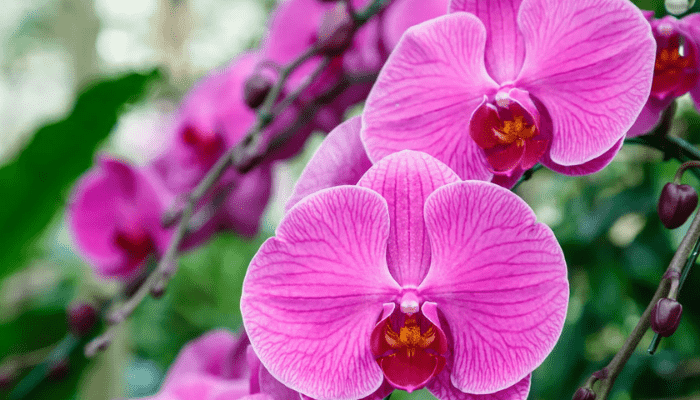
Orchid plant light
Bright, indirect light is necessary for orchids. The leaves may get scorched by direct sunlight, especially in the middle of the day.
Windows facing east or west are the best. If your windows are limited to those facing south, soften the light with a sheer curtain.
Make sure your plants receive adequate light throughout the monsoon season by situating them in well-lit areas.
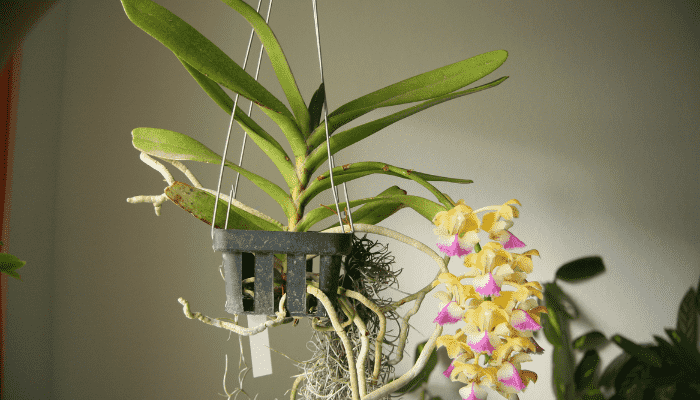
What humidity is good for orchids
50–70% humidity is ideal for orchid growth. To enhance humidity in air-conditioned spaces or during dry seasons, use a humidity tray that is filled with pebbles and water. Regularly mist the foliage, particularly first thing in the morning.
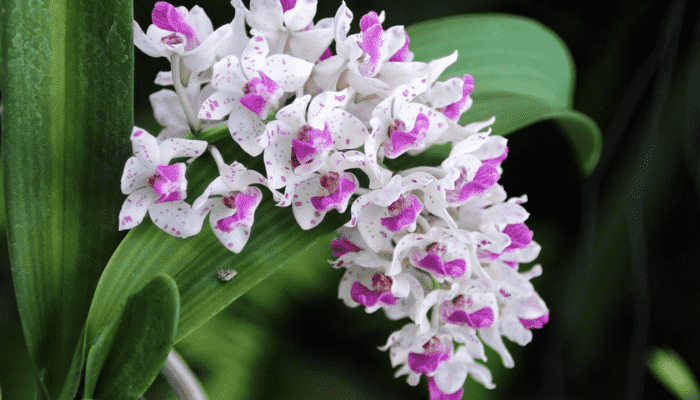
3. Orchid plant watering instructions
- Watering orchids properly is essential to their health.
- Watering once a week in the summer and twice a week in the winter is the frequency.
- Water thoroughly until the drainage holes are completely filled. In between waterings, make sure the potting media dries out a little.
- Water Quality: If at all possible, use distilled water or rainfall. High-chlorinated tap water can be dangerous.
- Steer clear of overwatering. Root rot is caused by roots sitting in water.
Stay cautious of overwatering. Root rot is caused by roots sitting in water.
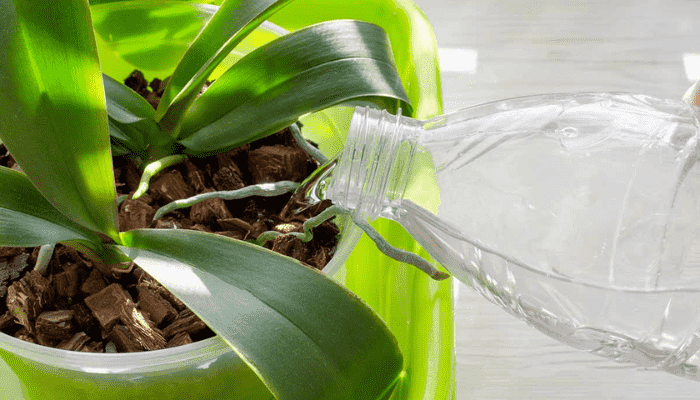
4. Containers and orchid potting media
- Usually epiphytic, orchids grow on other plants as opposed to in soil. This environment should be replicated in the potting medium.
- For your potting medium, combine perlite, charcoal, and bark. You can add sphagnum moss to help retain moisture.
- Use pots with adequate drainage as containers. You can keep an eye on the health of your roots with clear plastic pots.
- Repotting: When the potting material degrades, or every two to three years, repot orchids. It’s ideal to repot after blooming.
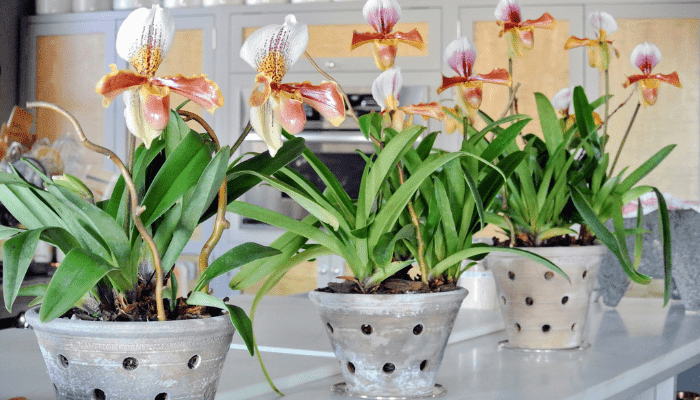
5. The process of orchid plant fertilizer
- Regular, yet moderate, feeding is necessary for orchids.
- Use a fertilizer that is specifically designed for orchids or a balanced, water-soluble fertilizer (20-20-20).
- Fertilize once a month in the fall and winter and every two weeks in the spring and summer, when the plant is actively growing.
- Method: Reduce the fertilizer’s strength to half or quarter. Fertilizer overuse might harm the roots.

6. Pruning and orchid plant maintenance
- Orchids benefit from routine care as it promotes health and flowering.
- Pruning: Eliminate wasted flower spikes and any dead or browning foliage. To stop the spread of illness, use sterile scissors.
- Cleaning Leaves: Light might be obstructed by dust and debris. Use a moist towel to gently wipe the leaves.
- Air Circulation: To avoid fungal diseases, make sure there is adequate air circulation around the plants. A fan is useful in small areas.
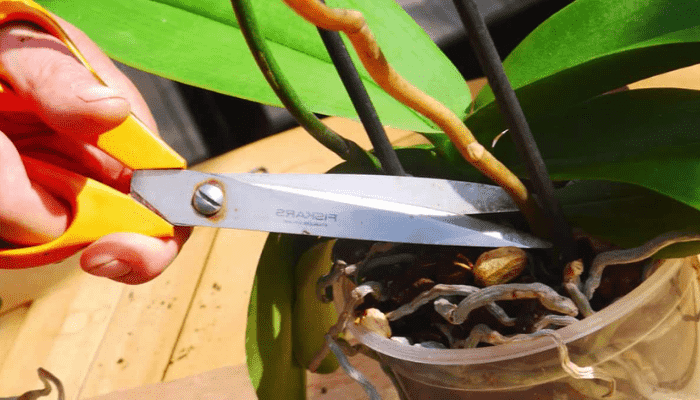
7. Managing orchid plant pest and diseases
Insects and illnesses can affect orchids. Timely action and routine inspection are crucial.
Typical Pests
- Aphids are tiny, green insects that congregate on recently sprouted plants. Apply insecticidal soap to the area.
- Mealybugs: white, cotton-like lumps that appear on stems and leaves. Hand-remove and apply neem oil treatment.
- Spider mites are microscopic red spiders that cause delicate webs on foliage. Apply miticides and raise the humidity levels.
- Scale: On leaves and stems, brown insects that resemble shells. Using cotton swabs dipped in alcohol, remove.

Typical Diseases
- Leaf spot: bacterial or fungal patches on leaves. Take off any impacted leaves and apply a fungicide.
- Flowers affected by botrytis (graymold) decay and turn brown. Boost airflow and get rid of any damaged blossoms.
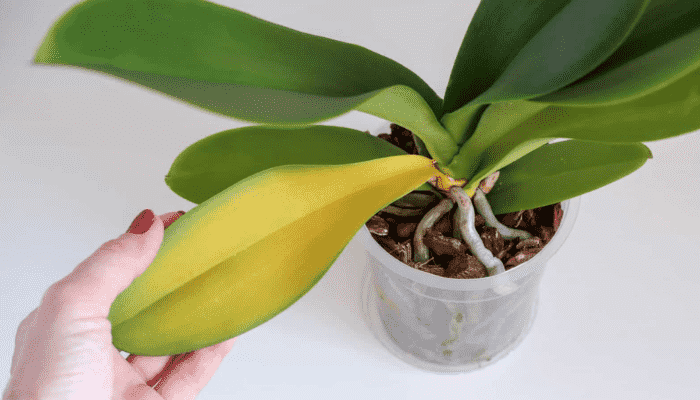
8. Promote Blooms
One of the most satisfying parts of caring for an orchid is watching it bloom.
- Temperature Drop: Blooming can be induced by a small decrease in overnight temperatures.
- Correct Lighting: Make sure there is enough light for the plant. One of the most common causes of failure to bloom is a lack of light.
- Fertilization: To promote blooming, use a phosphorus-rich fertilizer (such as 10-30-20).
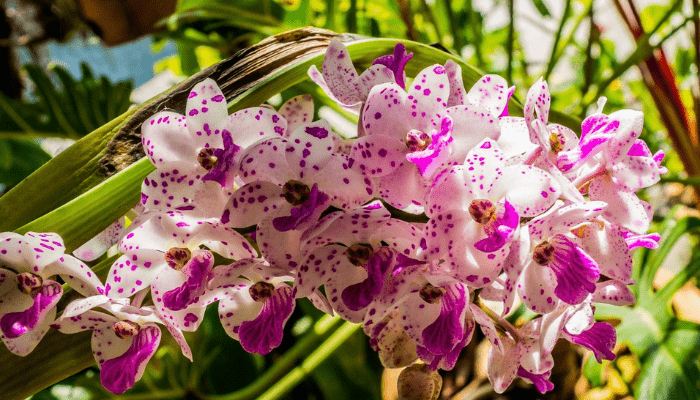
9. Particular Attention to Seasonal Variations When Growing Orchids in India
Summer: Water more frequently and give shade throughout the warmest portion of the day.
Monsoon: Owing to the high humidity, make sure there is adequate drainage to avoid waterlogging and to cut down on how often you water.
Winter: Keep chilly drafts away from orchids. Gradually reduce fertilizer and watering as growth slows.
Regional Differences
- Coastal Areas: Increased humidity is generally advantageous, but be cautious of salt accumulation caused by sea breezes. Periodically give plants a fresh water rinse.
- Inland Areas: Using humidity trays and misting more frequently are necessary due to the lower humidity.
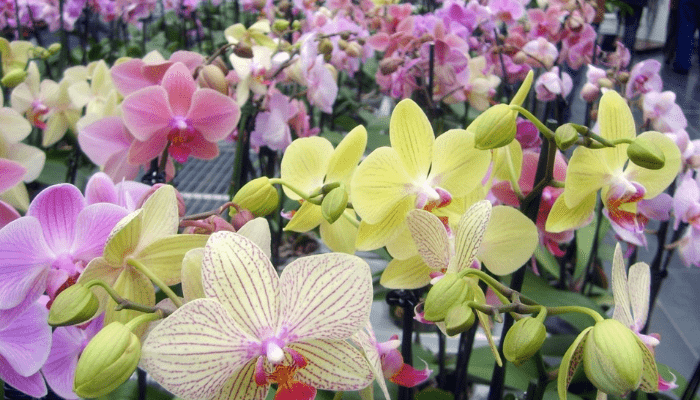
10. Orchid plant propagation
There are other ways of propagating orchids, but division is the most popular approach.
Division: Fits well with Cattleya and Dendrobium sympodial orchids. When repotting, divide the plant, making sure each division has three to four pseudobulbs at minimum.
Keikis: On the flower spike of certain orchids, such as Phalaenopsis and Dendrobium, young plants known as keikis are produced. The keiki can be removed and potted individually as soon as its roots are at least 2–3 inches long.
Seed Propagation: This intricate process is often carried out in controlled settings. Because it requires special media and sanitation, home growers may find it less practicable.
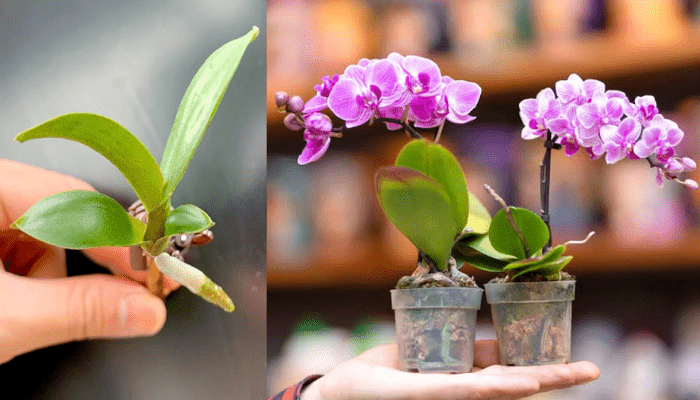
11. Common Mistakes to Avoid:
Overwatering is the main reason why roots decay. Achieve adequate drying in between watering’s.
Inadequate Light: Bright, indirect light is necessary for orchids. Observe light levels and make any required adjustments.
Using Regular Potting Soil: To ensure enough drainage and aeration, orchids require a specialized Orchid Potting Mix.
Ignoring Humidity: Keep the humidity level appropriate, especially in air-conditioned spaces or during dry seasons.
Ignoring Diseases and Pests: Healthy plants require timely treatment and routine examination.
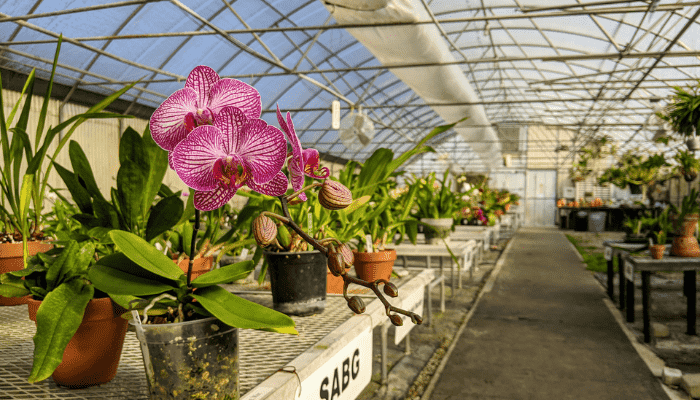
With their unique and exquisite blossoms that brighten any environment, orchids may be a gratifying plant to care for in India. Effective orchid care involves knowing what kind of environment they require and meeting their needs. The year-round beauty and grace of orchids can be yours with proper attention to these instructions for temperature, light, humidity, watering, potting, fertilization, trimming, pest management, and propagation. Recall that different orchid species may have slightly varied requirements, so it’s always a good idea to find out what the particular requirements are for the orchids you are raising.


